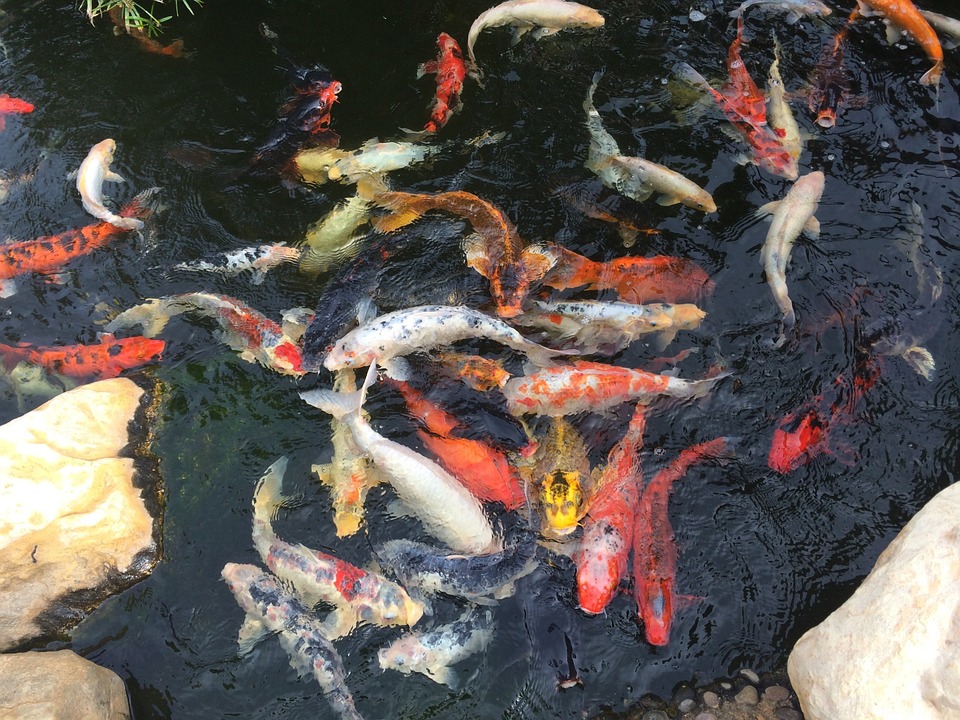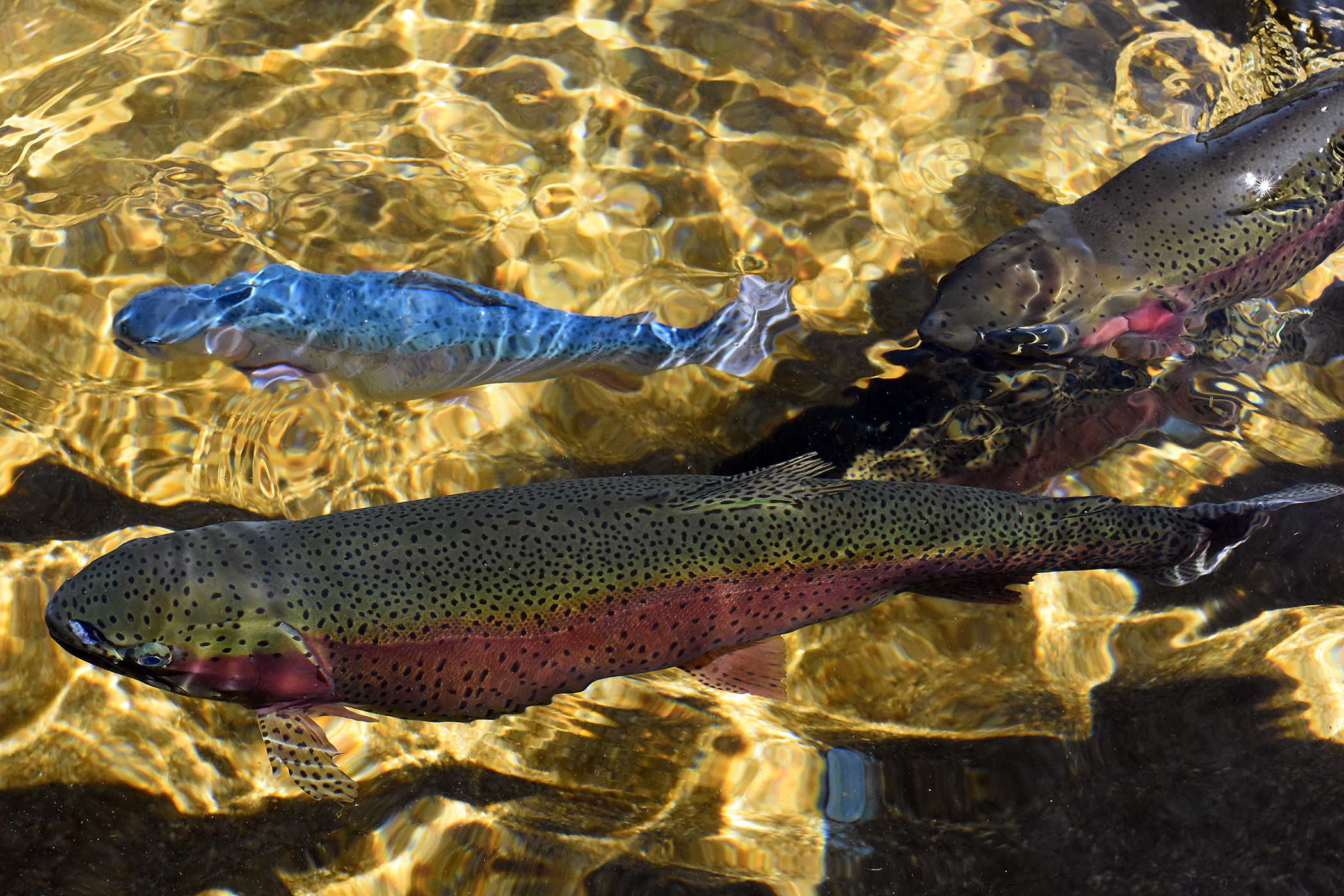Not sure what to do before or after you stock your pond with fish? Following Pond King’s fish pond preparation and maintenance article will help you get your pond ready!
It's not as simple as stocking a few bass and then catching three pounders the next year. You have to ask yourself, “What do I want my pond to be?” The experts at Pond King are here to guide you through the processes of pond preparation, stocking, after stocking, and maintenance.
Preparation
The first step to preparing your pond for stocking is finding out what fish may already be present. This can be done via an electrofishing survey, which is the most efficient way to determine fish assemblage and density. If a survey isn’t in the budget, frequently fishing with different types of baits and lures is an option to get a sense of what fish are in the pond.
Ponds typically have different species of vegetation and properly identifying them can help differentiate between beneficial and nuisance species. Nuisance species are typically unaesthetic and can be potentially harmful to fish if left uncontrolled. Beneficial species can provide structure and aesthetic value.

Vegetation can be treated in a variety of ways including chemicals, biological controls, and mechanical removal. Sunlight, water clarity, and nutrient availability are all factors that can either inhibit or promote vegetation growth. Water clarity can determine how much and how fast vegetation grows with your pond. Ideal water clarity ranges between 2 to 3 feet. More than three feet of visibility can allow vegetation to grow out of control. Increased visibility allows sunlight to penetrate into the water column and can lead to faster and more abundant vegetation growth.
Increased visibility can also make predatory fish work harder to catch prey, due to the fact that prey fish can see them from a further distance. Alkalinity, pH, and water hardness are also indicators of water quality. Bringing a water sample from your pond to Pond King will allow our biologists to examine your sample for these indicators.
Structure not only serves as habitat for fish but also promotes periphyton growth. Periphyton is the ideal food source for macroinvertebrates, which juvenile fish prey on. Typically 15-25% pond coverage is ideal, using some type of natural or artificial structure. Artificial fish structures not only outlast natural structures, but are easier to fish-through, ensuring that your hook or lure won’t get caught while fishing.
Stocking
After preparing your pond, its finally time to stock! A Pond King biologist can recommend a specific stocking plan to fit your pond management goals. For any additional information or questions regarding fish stocking, reference Pond King’s Fish Stocking FAQs.
After stocking your pond, it is recommended to have a recurrent electrofishing survey completed at a minimum of three years. Completing a survey will show how your original fish population has grown in size and number. Periodically surveying your pond allows you to efficiently remove any stunted fish or cull specific size classes, which pose as competition.
Surveys include personalized reports that summarize population density and relative weights. Relative weight is an index commonly used to determine fish condition by comparing your fish with the weight of fish in similar size classes. A low relative weight indicates that the fish is below average in weight for its size class. The Pond King App allows you to determine relative weight via the Bass-o-Meter. Entering your Bass length and weight will show how your Bass compares to the average Bass at that length.
Surveys also allow Pond King biologists to determine whether supplemental forage is necessary to increase fish relative weight. Additional forage can be added to your pond in one of two ways, fish feeders or stocking more prey fish. Both fish feeders and additional stocking increase the amount of available food for your fish. Increased food supplies will help fish gain weight faster.
Year-round Maintenance
Pond maintenance can typically be divided into two categories, vegetation and fish maintenance. An overabundance of aquatic vegetation can take over a pond and restrict fishing access. As stated earlier, maintaining vegetation in your pond can be done biologically, chemically, or mechanically. For example, the best time of year to lime a pond is during the fall, winter and early spring. This gives the lime plenty of time to react completely with the pond before beginning a fertilization program.
Mozambique Tilapia or Triploid Grass Carp are two species that will work to control a variety of aquatic plants. Mozambique Tilapia provide a biological control against filamentous algae; while also frequently reproducing and creating more prey for predatory fish. Triploid Grass Carp tend to eat leafier submerged plants such as Bushy Pondweed. A permit is required for Grass Carp for Texas residents, and can be obtained through Texas Parks and Wildlife Department.
Chemical application can kill nuisance aquatic vegetation. There are a variety of selective chemicals that are commonly used to treat aquatic vegetation. Pond King offers maintenance contracts, which are designed to keep your pond vegetation-free year round. Mechanical removal is typically the last option for removal, due to its ineffectiveness.
Harvesting bass is another form of maintaining your pond. Fish population maintenance can be done throughout the year by anglers. If you notice a multitude of bass in a similar size class or larger skinny bass, culling smaller bass may be necessary to decrease competition for food.
The Pond King App and Bass-O-Meter can help determine if culling is necessary for your pond. If you’re unsure of whether or not to cull bass, speak with a Pond King Biologist. Preparing and maintaining your pond are important to ensure that your pond reaches its maximum potential, both aesthetically and as a fishery. Pond maintenance can be a handful to do alone—let Pond King help. Pond King maintenance contracts include 12 maintenance visits throughout the year and ensure that your pond will be free from nuisance vegetation.




